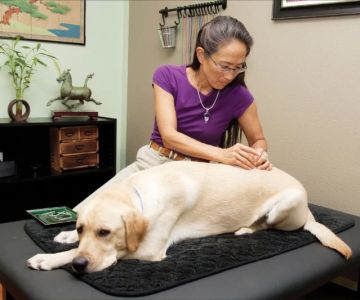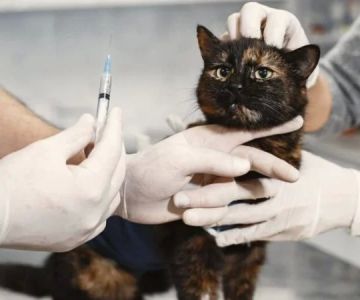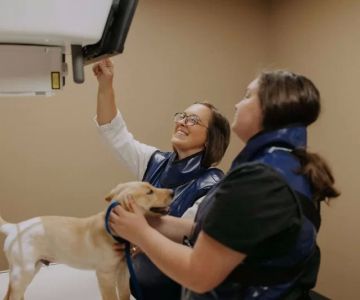- 1. Introduction to Veterinary Medicine
- 2. Degrees Required to Become a Veterinarian
- 3. Steps to Become a Veterinarian
- 4. How Long Does It Take to Become a Veterinarian?
- 5. Challenges of Veterinary School
- 6. Career Opportunities in Veterinary Medicine
1. Introduction to Veterinary Medicine
Becoming a veterinarian is a rewarding career choice for those passionate about animals and interested in medicine. Vets play an essential role in society by diagnosing and treating animals, providing preventive care, and ensuring the health and well-being of pets, livestock, and wildlife. However, the path to becoming a veterinarian is long and requires specialized education and training.
If you are wondering about what degrees are required to become a veterinarian and what the journey entails, this article will guide you through the necessary steps. We will break down the degrees, the required qualifications, and offer insight into how you can prepare for a career in veterinary medicine.
2. Degrees Required to Become a Veterinarian
To become a veterinarian, you need to obtain a degree from a recognized veterinary school. However, the path doesn’t begin directly with vet school. There are several educational requirements and degrees you must earn first. Here are the essential steps:
2.1. Bachelor's Degree
The first step to becoming a veterinarian is earning a bachelor’s degree. While you can technically major in anything for your undergraduate education, most aspiring vets choose a major related to science, such as biology, animal science, or chemistry. These subjects lay the groundwork for the advanced studies you will undertake in veterinary school.
Some schools may also require specific courses such as microbiology, physics, and animal biology as part of their admission requirements for veterinary programs. Getting a solid foundation in these areas will not only make you more competitive for vet school but will also help you succeed once you’re there.
2.2. Doctor of Veterinary Medicine (DVM or VMD)
After completing your bachelor’s degree, the next step is to attend a veterinary school to earn a Doctor of Veterinary Medicine (DVM) or a Veterinary Medical Doctor (VMD) degree. Both degrees are equivalent and are required to practice veterinary medicine in the United States. This professional degree typically takes four years to complete.
During veterinary school, students will undergo rigorous coursework in subjects like anatomy, physiology, pharmacology, pathology, and surgery, while also gaining hands-on experience in clinical settings. You will work with various animals, from companion pets to farm animals, and gain skills necessary to diagnose and treat their conditions.
2.3. Licensing
In addition to earning your DVM or VMD, you must also become licensed to practice in your state. This typically involves passing the North American Veterinary Licensing Examination (NAVLE) and meeting any additional state requirements. Some states may require an additional state exam or specific continuing education to maintain your license.
3. Steps to Become a Veterinarian
Becoming a veterinarian involves several steps beyond obtaining the necessary degrees. Here’s a more detailed look at the path to becoming a veterinarian:
3.1. Completing Pre-Veterinary Requirements
Before entering veterinary school, you’ll need to complete your undergraduate education, which usually takes about four years. During this time, you’ll complete general education courses and focus on science subjects. You may also need to gain some practical experience working with animals, either through internships, volunteer work, or part-time jobs in animal shelters or clinics. This experience is valuable and often required by veterinary schools.
3.2. Attending Veterinary School
Once you’re accepted into a veterinary program, the next step is to complete the four years of rigorous study. During this time, you will learn clinical skills, medical knowledge, and diagnostic techniques, as well as work closely with both animals and veterinary professionals. You’ll also have the opportunity to specialize in areas like surgery, internal medicine, or exotic animal care.
3.3. Passing Licensing Exams
After completing your veterinary education, you must pass national and, in some cases, state exams to obtain your license. The NAVLE is a standard requirement, but states may have additional exams or requirements, such as continuing education credits.
4. How Long Does It Take to Become a Veterinarian?
Becoming a veterinarian typically takes at least 8 years of education and training. This includes:
- 4 years for a bachelor’s degree
- 4 years for a Doctor of Veterinary Medicine (DVM or VMD) degree
So, it takes about 8 years to become a licensed veterinarian after high school. However, additional years may be needed if you pursue further specialization or training in a specific area of veterinary medicine, such as surgery or dermatology.
5. Challenges of Veterinary School
Veterinary school is notoriously challenging. The rigorous coursework, long hours, and clinical rotations can be mentally and physically taxing. Students must master complex medical concepts, perform surgeries, and deal with the emotional demands of caring for animals and their owners. While the process is rewarding, it requires dedication, perseverance, and passion for animals.
One of the most difficult aspects of veterinary school is the cost. Veterinary education can be expensive, and many students graduate with substantial student loan debt. However, for those passionate about veterinary medicine, the investment in education pays off in the rewarding nature of the career.
6. Career Opportunities in Veterinary Medicine
Veterinarians can specialize in a wide range of fields, offering numerous career opportunities. Some common veterinary career paths include:
6.1. Companion Animal Veterinarian
Most veterinarians work with pets like dogs and cats, diagnosing and treating a variety of conditions. This is a rewarding field for those who enjoy building long-term relationships with pets and their owners.
6.2. Large Animal Veterinarian
Large animal veterinarians typically work with livestock, such as cows, horses, and pigs. They often travel to farms or ranches to provide care and may deal with agricultural health issues, reproduction, and preventative care.
6.3. Veterinary Surgeon
Some veterinarians choose to specialize in surgery, performing complex procedures to treat injuries, diseases, and conditions in animals. This requires additional training after vet school.
6.4. Exotic Animal Veterinarian
Exotic animal veterinarians specialize in treating animals like birds, reptiles, and small mammals. This path requires a strong interest in wildlife and a unique set of skills for diagnosing and treating these non-traditional pets.
Veterinary medicine offers diverse career options, allowing you to specialize in areas that interest you most. Whether you work in private practice, research, or with wildlife conservation, the opportunities are abundant for those passionate about animal care.
As you consider pursuing a career in veterinary medicine, it's important to understand the educational requirements, commitment, and passion that come with the job. If you’re interested in starting your career or continuing your education in veterinary care, explore the resources available to you, and take the first step towards making a difference in the lives of animals.
If you are looking for more information on veterinary education or need resources for your veterinary career, visit Hidden Brook Veterinary to discover helpful guides, products, and services to support your professional journey in veterinary medicine.











